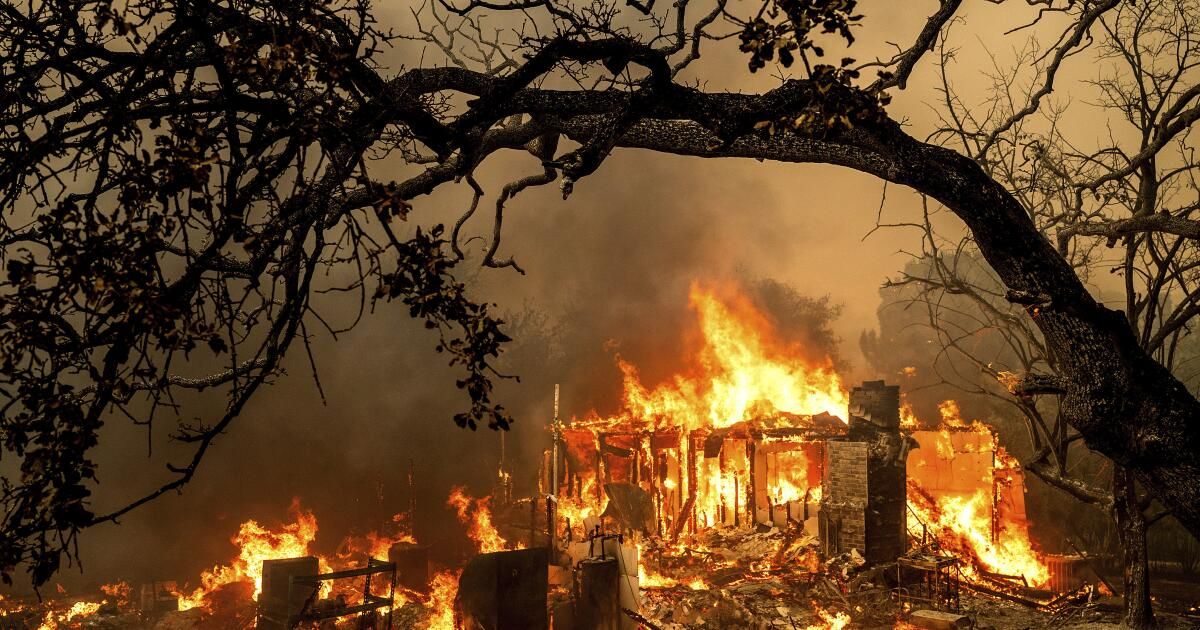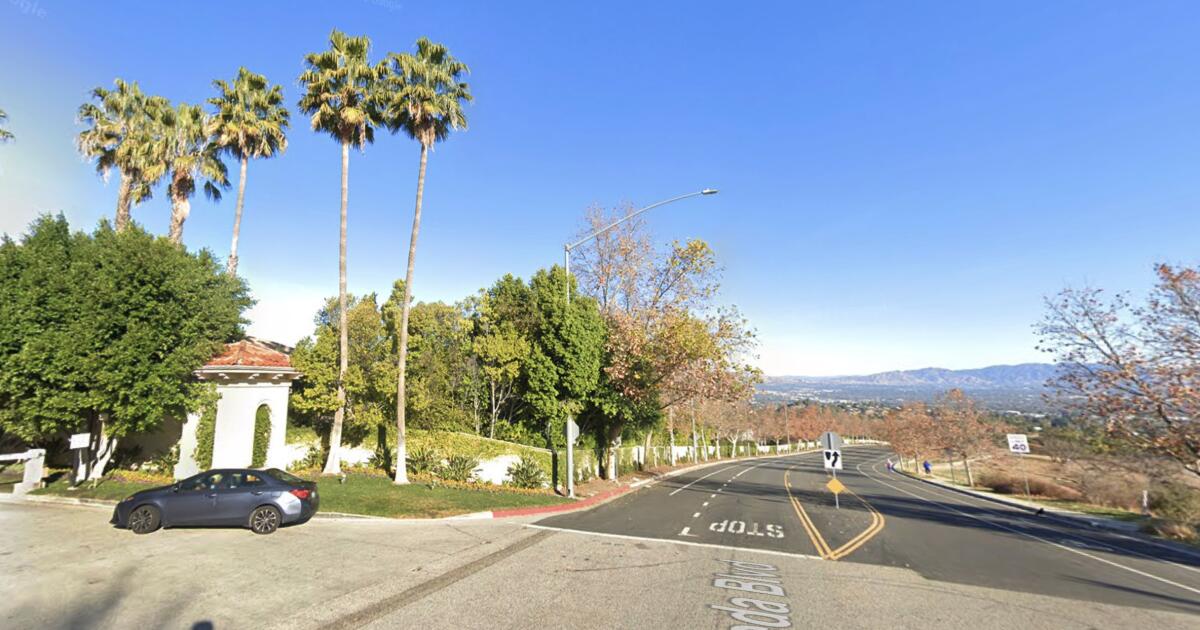As California braced for a dangerous and prolonged heat wave expected to last into next week, firefighters across the state were already battling several new wildfires, some severe enough to force evacuations.
The most dangerous fire was in Oroville. The Thompson Fire prompted an evacuation order affecting thousands of people in and around the city and Butte County after it broke out shortly before 11 a.m. Tuesday, according to Dan Collins, a fire captain with Cal Fire’s Butte County station.
The fire is threatening about 230 structures in the area. Collins said PG&E shut down power lines in the area after the flames broke out. The fire had no chance of containment as of Tuesday night.
Images on social media and local news showed several buildings on fire in Oroville, but the exact number of structures burned was unclear.
Much of Northern California remained under a red alert (an alert for extreme fire weather conditions) and an excessive heat watch. The red alert warned of a combination of winds up to 30 mph, low humidity and high temperatures that “may contribute to extreme fire behavior,” according to the National Weather Service.
At least four new fires broke out in the region on Tuesday, according to the California Department of Forestry and Fire Protection.
Given the conditions, Pacific Gas & Electric Co. initiated its first public safety power shutoffs of the year, affecting 2,000 customers in eight counties: Butte, Colusa, Lake, Napa, Solano, Sonoma, Tehama and Yolo. The shutoffs, which are expected to last at least through Wednesday, are intended to prevent the utility’s equipment from starting fires in dangerous conditions.
The Thompson Fire quickly grew to nearly 100 acres Tuesday, burning mostly grassland, Collins said. By evening, the fire had blackened 2,135 acres and prompted the city of Oroville to declare a state of emergency. About 13,000 people live in the area within the evacuation perimeter, a Butte County sheriff’s spokesman said. A Cal Fire official estimated that as many as 2,000 had left their homes by late Tuesday.
Butte County fire crews had an advantage: The Thompson Fire was burning near Lake Oroville, allowing water-dropping helicopters to make “quick loops” between the massive reservoir and the leading edge of the fire, Cal Fire said.
In Napa County, north of Calistoga, the Toll Fire started shortly before 10 a.m. Tuesday and had grown to about 50 acres by afternoon, according to Cal Fire.
The wind-driven blaze closed at least one road in the area and prompted several evacuation orders and warnings, affecting just over 100 people in the area, according to Jason Clay, a Cal Fire spokesman at the Sonoma-Lake-Napa station. By nightfall, crews had contained just 15 percent of the blaze.
Conditions in the area are ripe for more wildfires, Clay said.
“The grasses are very dry,” said Clay, who also noted the area's red flag warning. “That combination is lining up, [and] which could lead to extreme fire behavior.”
Firefighters have continued to warn that once vegetation dries out completely (typically by mid-summer), wildfires could intensify, given the profusion of grass and brush that has grown after two winters of heavy rainfall.
“Avoid activities that could cause a wildfire, such as parking in dry grass, dragging chains or using equipment during the hottest part of the day. Remember: one less spark means one less fire,” Cal Fire advised on social media.
Daniel Swain, a climate scientist at UCLA, said it was “essentially inevitable” that wildfires would continue to start and grow during the heat wave, which was just beginning Tuesday, given the threat of more fires due to holiday weekend fireworks and firecrackers, high temperatures and a buildup of dry fuels.
“It’s a pretty bad combination, honestly, to have a potentially record-breaking heat wave that starts with dry northerly winds,” Swain said at a news conference Monday. “Buckle up, I think the California fire season is likely to intensify considerably over the next five to seven days.”
In eastern San Diego County, another large fire continued to grow after it started Monday. The McCain Fire, burning just off Interstate 8, was 30% contained Tuesday night, having burned 1,362 acres, according to Cal Fire. The blaze had prompted multiple evacuation orders and warnings, affecting about 140 people, according to Mike Cornette, a fire captain with Cal Fire’s San Diego County fire crew.
Authorities closed a section of the westbound lane of Interstate 8, but the eastbound lane remained open, Cornette said. The definitive cause of the fire is still being investigated, but Cornette said it was likely caused by a traffic collision that caused a vehicle to become engulfed in flames. He said about 150 structures were threatened, but none had been damaged.
“There’s not a lot of smoke coming out of the fire right now, but the fire is still active,” said Cornette, who expects it will be several more days before the blaze is fully contained.
Two other small fires also burned in Northern California on Tuesday: the Denverton Fire in Solano County and the Yolla Fire in Shasta County, both less than 30 acres as of Tuesday afternoon.
Crews were also still battling the Basin Fire, which as of Tuesday had burned more than 13,000 acres in the Sierra National Forest in Fresno County. It was 26% contained, according to Cal Fire.
The fire is burning near Balch Camp, an isolated community from which more than 150 people were evacuated because of the blaze. PG&E has electrical infrastructure there, but a company spokesman said none of its facilities had been affected as of Tuesday morning.
Times staff writer Rachel Uranga contributed to this report.












